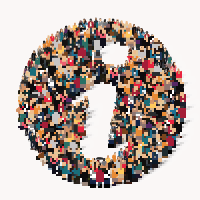A Company Community: How to Know if You Need One

Communities, collaboration software, intranets...it is tough to distinguish the difference these days, but the premise is the same: provide employees access to all the people and "paperwork" they need to effectively do their job.
It does not matter if a coworker is down the hall or across the country, walls exist keeping employees from having necessary conversations and getting valuable information to be inspired, make suggestions, carry out tasks successfully, and feel as if they are valued and contributing to the greater good of the company.
As part of our upcoming December feature, "Making Connections via Online Communities," Website Magazine caught up with Daisy Hernandez, Global VP of Product Management at SAP Jam. Since she provided such helpful insights, we've included Hernandez's commentary below. As you read along, we think you may identify with some of the problems Hernandez suggests exist - a surefire sign some sort of online gathering place needs to be created for your organization. We've also included some questions to ask yourself at the end of this article as well as a nifty infographic from Bonfyre further detailing the need for an online workplace.
Part 1: Insider Insights
What are a few trends you are seeing in regard to online community launches, management or optimization?
Hernandez, SAP Jam: Creating an atmosphere of knowledge sharing and communication across an organization is key to both business and individual employee success and the ability to get work done. If departments try to operate in a silo and do not break down informational barriers, this creates an environment where departments and teams are not working toward the same complementary goals and are therefore not aligned with the overall company's objectives.
Enterprise success begins with employee success - meaning that organizations need to create a culture of collaboration across roles and departments. When we use the word "silo," it is often, unfortunately, both literal and figurative. We've seen this sort of wall-building activity happen with our customers before they come to SAP Jam - they've built walls around their people according to organizational structure or geographic location. However, the need for information does not respect organizational or geographic boundaries, so why would a company want to have this sort of approach?
SAP Jam recently announced new capabilities for HR organizations to make it easier for the company and HR teams to communicate and engage with employees and provide scalable employee support. The same platform also helps employees learn more from their colleagues in a variety of ways - from training to project development. The SAP Jam collaboration platform brings all levels of the organization together by creating a hub where employees can sync up on projects, share notes and feedback in real-time, find onboarding materials for continued growth, and more.
Anything else you'd like to add about Jam announcements or case studies?
Hernandez, SAP Jam: According to Bersin by Deloitte's recently published HR Technology Disruptions 2018 Report, the current key trends center around employee experience and making it easier for the employee to complete their work, including finding information, learning something, or simply performing a task. When information is siloed it creates barriers to company and employee success. At our annual SAP SuccessFactors customer conference, one of SAP Jam's customers, Chico's FAS, shared that by leveraging the abilities of SAP Jam, they are able to break down information silos, share information and communicate directly to their 1,500 boutiques and 24,000 associates. Coincidently, we have seen exactly the same problems and benefits of using SAP Jam not only in other retail businesses, but also with companies that have widely distributed teams, remote employees or various satellite offices and locations across hospitality, travel, manufacturing, and even utility providers.
The commonality between all of these examples is that the employees are literally separated from their corporate offices and people. In the example of Chico's FAS, each boutique is effectively a satellite office. These employees get their information from corporate HR, marketing and merchandising teams and, in turn, need to relay that information out to the employees on the store floor. However, most boutique employees don't use computers. Instead, they use SAP Jam's mobile app to enable employees to communicate with coworkers, share information both between stores and with corporate, engage with employees company wide and provide learning opportunities for employees - all in their preferred (or required) way of doing their job.
Part 2: Questions to Ask
- Is there a central place for employees to turn to for brand assets, peer questions, company news, coworker communication, employee contacts, answers...?
- Are employees spending "too much" time looking for answers?
- What's employee morale like in your organization?
- What's employee retention like?
- Do you have remote employees?
- Beyond a list of names, does your staff know who everybody is within the organization?
- Can they easily communicate with others inside and outside their departments?
- Is your organization transparent with information or does it hoard it?
- Do employees have to wait hours or sometimes days for replies to emails?
- Can collaboration be better within your organization?
Part 3: Visualizing a Company Community


Subscribe to Our Newsletter!
Latest in Software







